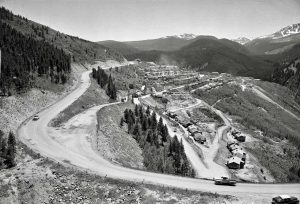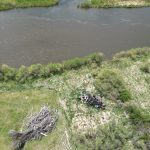The West’s best rock show

Randy Wyrick|randy@vaildaily.com |
DOTSERO — The Glenwood Canyon closure this past week is the longest in history, and Colorado Department of Transportation crews can’t say exactly when it will end.
Maybe Saturday, maybe not.
What you need to know
The Colorado Department of Transportation hoped to open one lane of Interstate 70 through Glenwood Canyon today or Sunday, although no specific time was announced.
The goal is still today, but they won’t know anything until at least early Saturday afternoon.

Support Local Journalism
For the next day or so, plan to take a detour, said Colorado Department of Transportation’s Amy Ford.
“We’re working as hard as we possibly can be,” Ford said.
Pilot car program: When the highway reopens, and eventually it will, it will be one of the four lanes, and you’ll follow a pilot car.
You’ll wait about at least an hour in lines to get behind the pilot car, calculating the normal traffic of 300 cars an hour through the canyon.
The pilot car program will last several days, Ford said.
If you’re westbound: If you’re westbound, then the line forms at the Bair Ranch exit. You’ll follow a pilot car to the Hanging Lake exit where the pilot car will turn around to lead eastbound traffic.
If you’re eastbound: If you’re eastbound, then the line forms at exit 116, the main Glenwood Springs exit. You’ll follow the pilot car to the Grizzly Creek exit
Ford cautioned that it’s part of us adjusting to where we are.
“We live in Colorado, we live in the mountains with rock walls. It stands to reason that some of that rock will come down,” Ford said.
What you want to know
• Geologists say this sort of thing is a 500-year event.
• That means in the past 12 years we’ve had three of these 500-year events: November 2004, spring 2010, the current rock slide currently snarling travel plans.
• In 2004, more than 1,300 tons fell.
• That 2010 rock fall blew through several yards of 30-inch thick concrete wall, poured around reinforcing steel bars an inch and a half thick. It also punched a hole in the road about the size of a small RV.
• For shutting down the interstate, this one is a new record. By Friday night, this Glenwood Canyon closure will be at 96 hours.
• The cost of lost commerce of I-70 closing is $1 million an hour in Glenwood Springs.
• Thursday was tough. Workers strapped on 60 pounds of gear and climbed 1,200 feet up the canyon walls above the road, and over scree fields to reach the rocks that needed to come down. Those workers used either 4-foot pry bars or air bags, similar to the ones used by emergency crews to lift cars in auto accidents.
• After rain, snow, wind and hail grounded their helicopter Thursday, it was back in the air Friday, hauling workers and equipment back to the top of the canyon walls.
Colorado Department of Transportation crews and Geo Stabilization International, a firm based in Grand Junction, are doing most of the work.
Eye of this storm
The eye of this year’s storm is Hanging Lake tunnel. The Colorado Department of Transportation has a video wall with 28 video monitors, all 55 inches that are constantly watched. They see things like:
• The 17 car pileup in 2007. A woman got out of her car and when more cars crashed into hers, she jumped over the guardrail and onto the bike path below. She broke both of her legs.
• There was the rockfall that smashed a camper being pulled by an SUV. A kid was eating a McDonald’s hamburger in the back seat. The rocks missed him by inches.
• A guy stopped his car in the left lane of I-70 in the canyon to look at an accident in the right lane. A dozen cars and five semi-trucks smashed into each other behind him, as he motored away apparently unaware.
• Occasionally a rock fall will break a camera monitoring traffic. Colorado Department of Transportation crews always replace it right away, because when it comes to chronicling human foibles, a picture really is worth 1,000 words.











